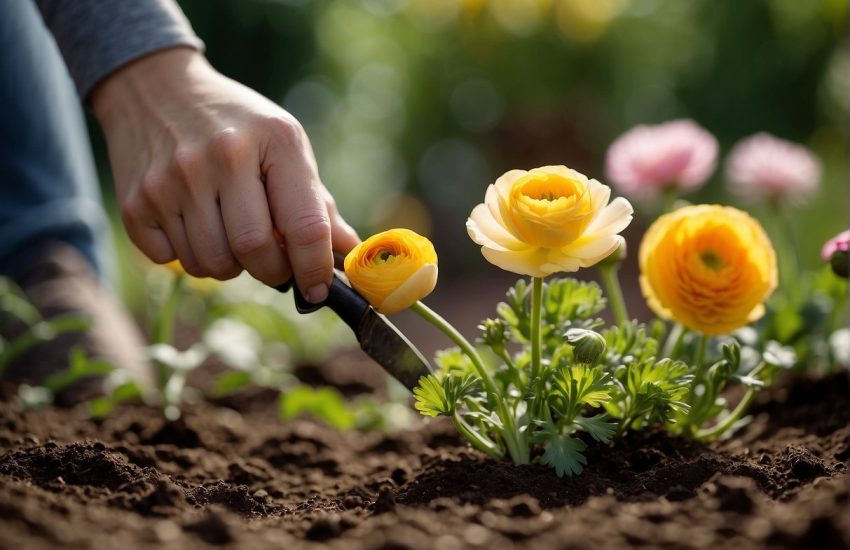Can You Propagate Lavender? A Guide to Successfully Growing Lavender Plants
Lavender is a popular herb that is known for its fragrant aroma and beautiful purple flowers. Many gardeners enjoy growing lavender for its ornamental value, as well as for its medicinal and culinary uses. However, some people may wonder if they can propagate lavender to produce more plants. The answer is yes, and in this article, we will explore the different methods of propagating lavender.
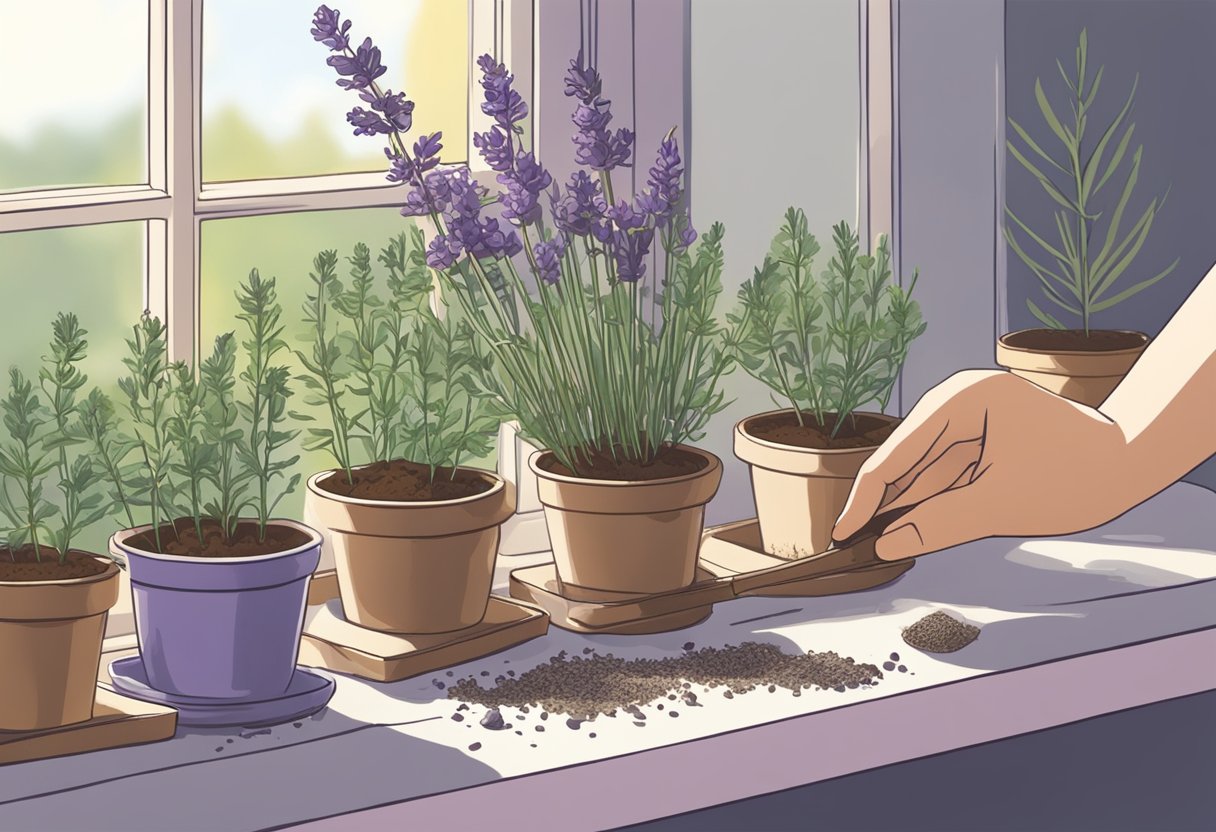
One of the most common ways to propagate lavender is through stem cuttings. This involves taking a cutting from an existing lavender plant and rooting it in soil or water. Another method is to divide an established lavender plant into smaller sections and replant them. Both of these methods can be done at home with a little bit of knowledge and patience.
Propagation is an important aspect of plant cultivation, and it allows gardeners to create new plants from existing ones. Lavender is no exception, and with the right techniques, it can be propagated successfully. In the following sections, we will delve deeper into the different methods of propagating lavender, including when and how to do it.
Understanding Lavender
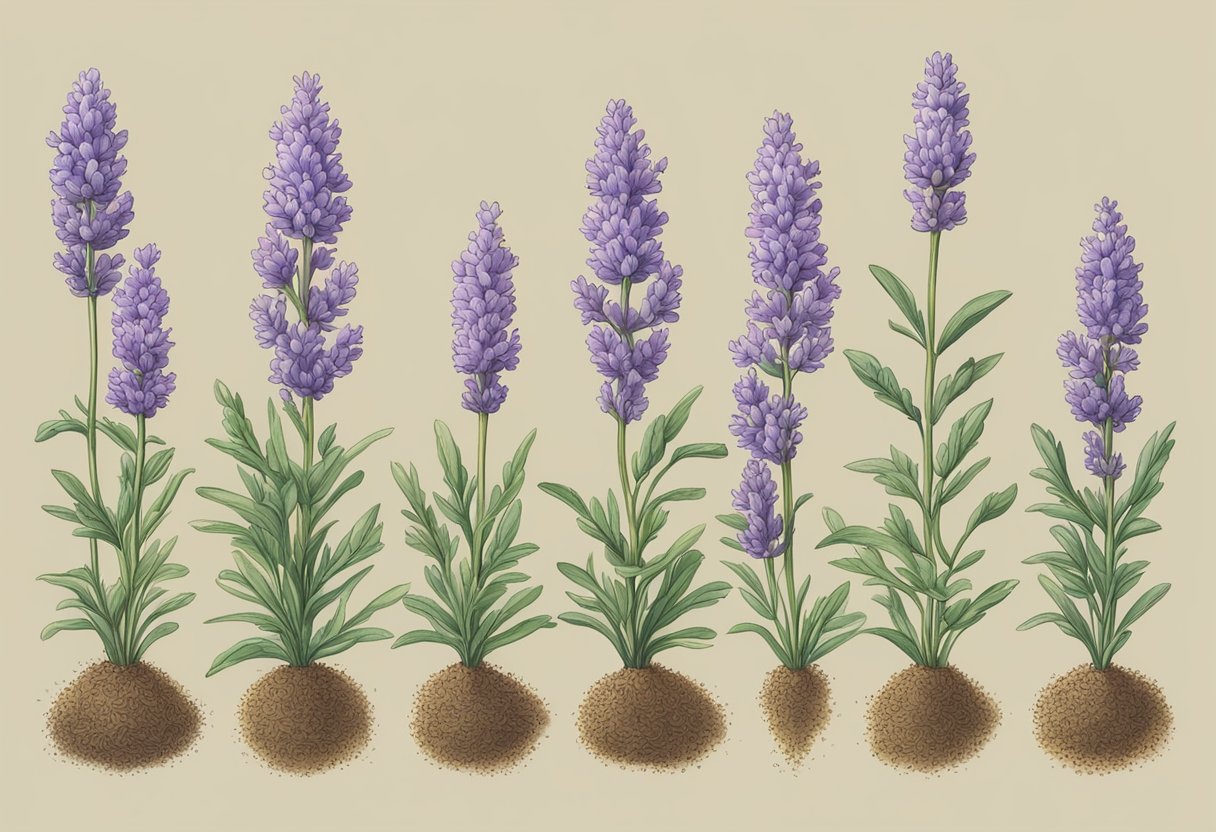
Lavender Varieties
Lavender is a popular plant known for its fragrant flowers and soothing properties. There are several varieties of lavender, each with its unique characteristics. The most common types of lavender include English lavender, French lavender, and Spanish lavender. English lavender is the most widely grown variety and is known for its sweet fragrance and long-lasting blooms. French lavender has a stronger scent and is often used in perfumes and essential oils. Spanish lavender has a unique appearance with its short, fat blooms and is often used as a decorative plant.
Optimal Growing Conditions
For lavender to thrive, it requires specific growing conditions. Lavender prefers well-drained soil and full sun exposure. It is also important to ensure that the plant is not overwatered, as this can lead to root rot. Lavender is a hardy plant and can tolerate drought conditions, making it an ideal choice for gardens in dry climates. To encourage healthy growth, it is recommended to prune lavender regularly and fertilize it with a balanced fertilizer once a year.
In conclusion, understanding the different varieties of lavender and the optimal growing conditions is essential for successfully propagating this popular plant. By providing the right environment for lavender to thrive, gardeners can enjoy the fragrant blooms and soothing properties of this beautiful plant.
Propagation Basics
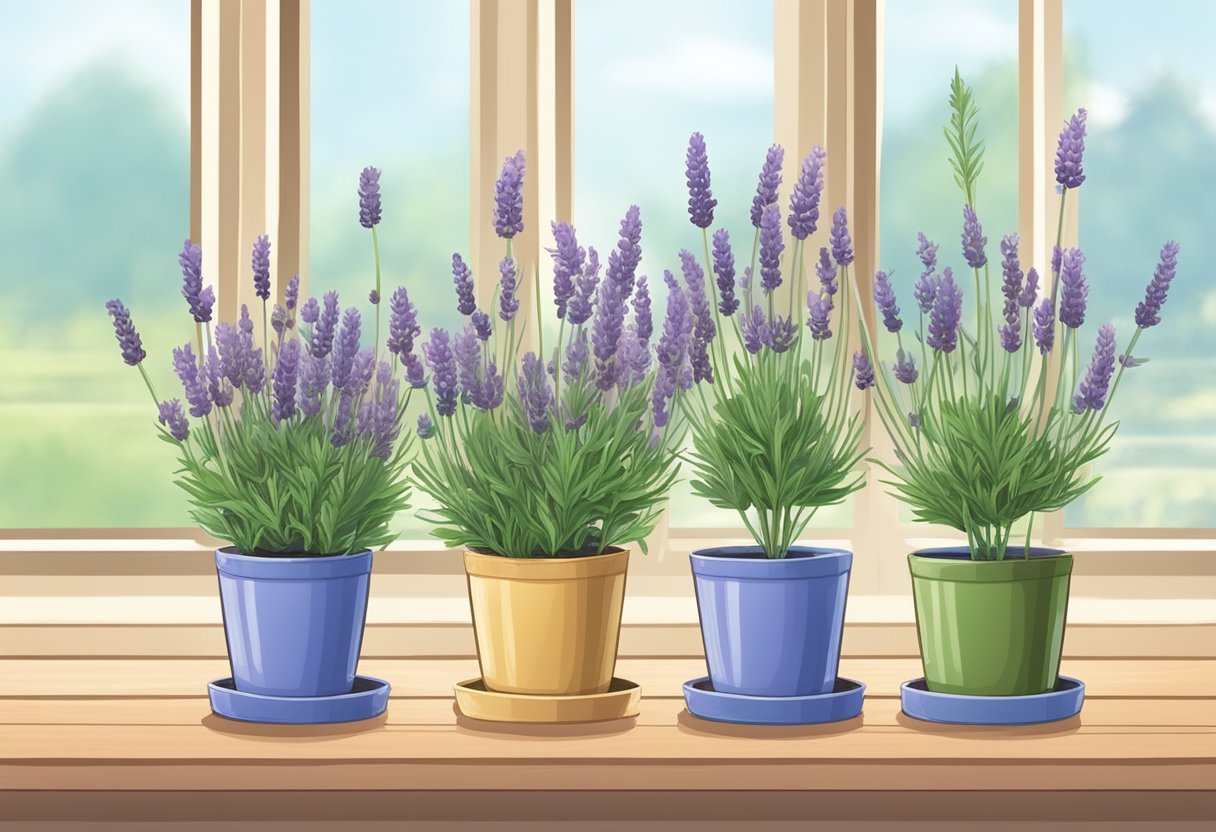
Propagation Methods Overview
Lavender can be propagated through several methods such as seed propagation, stem cuttings, and layering. However, stem cuttings are the most common and easiest way to propagate lavender.
To propagate lavender through stem cuttings, select a healthy and mature plant and take a cutting that is 3-4 inches long. Remove the lower leaves and dip the cut end in rooting hormone. Plant the cutting in well-draining soil and keep it moist until it roots.
Best Time to Propagate
The best time to propagate lavender through stem cuttings is during the spring or early summer when the plant is actively growing. Avoid propagating during the winter or fall when the plant is dormant.
When propagating through seed, sow the seeds in the fall or early spring. Keep the soil moist and the temperature around 70°F until the seedlings emerge.
Overall, propagating lavender is a simple process that can be done through various methods. With proper care and attention, your new lavender plants will thrive and add beauty to your garden.
Preparing for Propagation

Preparing for propagation is an important step to ensure successful growth of new lavender plants. This section will cover two key aspects of preparing for propagation: selecting cuttings and using rooting hormones.
Selecting Cuttings
When selecting cuttings for propagation, it is important to choose healthy, disease-free plants with new growth. The best time to take cuttings is in the spring or early summer when the plant is actively growing. Cuttings should be taken from the top of the plant and should be approximately 4-6 inches in length.
To ensure successful rooting, cuttings should be taken with a sharp knife or pruning shears. The cut should be made at a 45-degree angle and should be just below a node. The bottom leaves should be removed to prevent them from rotting and to encourage root growth.
Using Rooting Hormones
Using rooting hormones can increase the chances of successful propagation. Rooting hormones are available in powder, liquid, and gel form and can be found at most garden centers.
Before applying the rooting hormone, the cut end of the cutting should be dipped in water to prevent the hormone from washing off. The cutting should then be dipped in the rooting hormone and excess powder should be shaken off. The cutting should be planted in a well-draining soil mix and kept moist until roots have formed.
In conclusion, preparing for propagation is an important step in growing new lavender plants. By selecting healthy cuttings and using rooting hormones, gardeners can increase the chances of successful propagation and enjoy the beauty and fragrance of lavender in their gardens.
Propagating Lavender in Soil
Planting Cuttings
Propagating lavender in soil is a simple and effective way to grow new plants. One of the most common methods of propagation is through stem cuttings. To begin, select a healthy stem from an existing lavender plant and cut it to a length of 4-6 inches. Remove the leaves from the bottom 2 inches of the stem, leaving only the top leaves intact.
Next, fill a small pot with well-draining potting soil. Make sure the pot has adequate drainage to prevent water from accumulating in the soil. Dip the cut end of the stem into rooting hormone powder to encourage root growth, then gently press it into the soil. Water the soil lightly, being careful not to overwater, as this can cause the cutting to rot.
Place the pot in a warm, sunny location and keep the soil moist. After a few weeks, the cutting should begin to develop roots. Once the roots are well-established, the new plant can be transplanted into a larger pot or directly into the ground.
Caring for New Plants
To ensure the success of newly propagated lavender plants, it is important to provide proper care. Water the plant deeply once a week, allowing the soil to dry out slightly between waterings. Lavender prefers well-draining soil, so be sure to avoid overwatering.
In addition to regular watering, lavender plants benefit from regular pruning. This helps to promote bushier growth and prevent the plant from becoming too woody. Prune the plant in the spring, cutting back any dead or damaged branches and shaping the plant as desired.
Overall, propagating lavender in soil is a simple and rewarding process that can yield beautiful new plants. With proper care and attention, these plants can thrive and provide fragrant blooms for years to come.
Propagating Lavender in Water
Propagating lavender in water is a simple and effective way to grow new lavender plants from cuttings. This method is especially useful for gardeners who want to expand their lavender collection without spending money on new plants.
Water Propagation Steps
To propagate lavender in water, follow these steps:
- Take a cutting from a healthy lavender plant, making sure it is at least 4 inches long and has several sets of leaves.
- Remove the leaves from the bottom 2 inches of the cutting.
- Fill a glass or jar with water and place the cutting in the water, making sure the bottom 2 inches are submerged.
- Place the glass or jar in a sunny location, but out of direct sunlight.
- Change the water every few days to prevent bacteria growth.
Within a few weeks, roots should start to grow from the bottom of the cutting. Once the roots are at least 1 inch long, the cutting can be transplanted into soil.
Transitioning to Soil
To transition a lavender cutting from water to soil, follow these steps:
- Fill a small pot with well-draining soil.
- Gently remove the cutting from the water and shake off any excess water.
- Make a small hole in the soil and place the cutting in the hole.
- Cover the roots with soil and gently press down.
- Water the soil thoroughly, but avoid getting water on the leaves.
- Cover the pot with a plastic bag to create a mini greenhouse and place it in a sunny location.
After a few days, remove the plastic bag and continue to care for the lavender plant as you would any other plant. With proper care, the new lavender plant should thrive and grow into a beautiful addition to your garden.
Aftercare and Plant Management
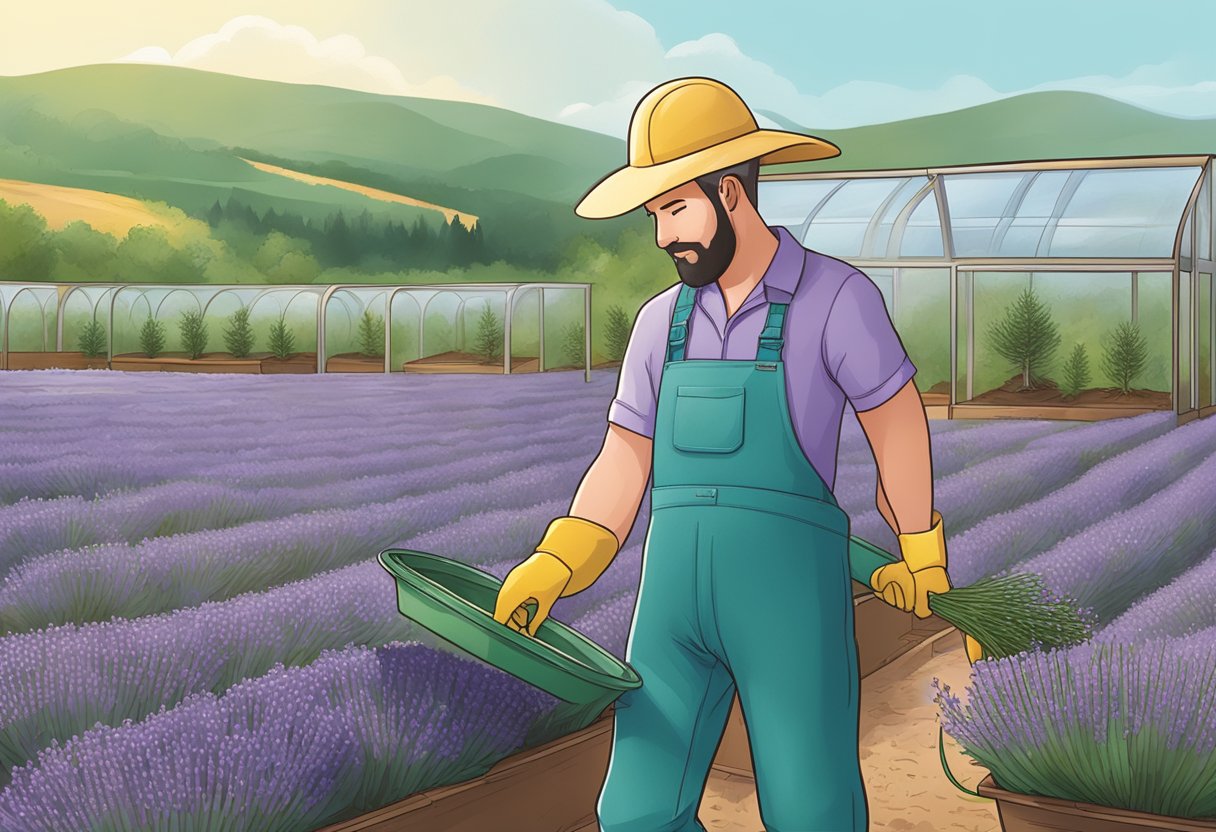
Pruning and Maintenance
Lavender plants require little maintenance once established. However, regular pruning is necessary to keep the plant healthy and promote growth. Pruning should be done in the spring, after the last frost, and again in the fall before the first frost.
To prune, remove about one-third of the plant’s height, cutting just above a set of leaves. This will encourage the plant to grow new shoots and produce more flowers. Deadheading spent blooms will also promote new growth and extend the flowering season.
Pest and Disease Management
Lavender is generally resistant to pests and diseases, but there are a few issues to watch out for. Aphids and spider mites can be a problem, especially in hot, dry weather. To control these pests, spray the plant with a strong stream of water or use an insecticidal soap.
Fungal diseases, such as root rot and powdery mildew, can also affect lavender plants. To prevent these diseases, avoid overwatering and make sure the soil is well-draining. If signs of disease appear, remove affected leaves and treat the plant with a fungicide.
Overall, with proper care and maintenance, lavender plants can thrive and provide a beautiful addition to any garden.
Additional Propagation Techniques
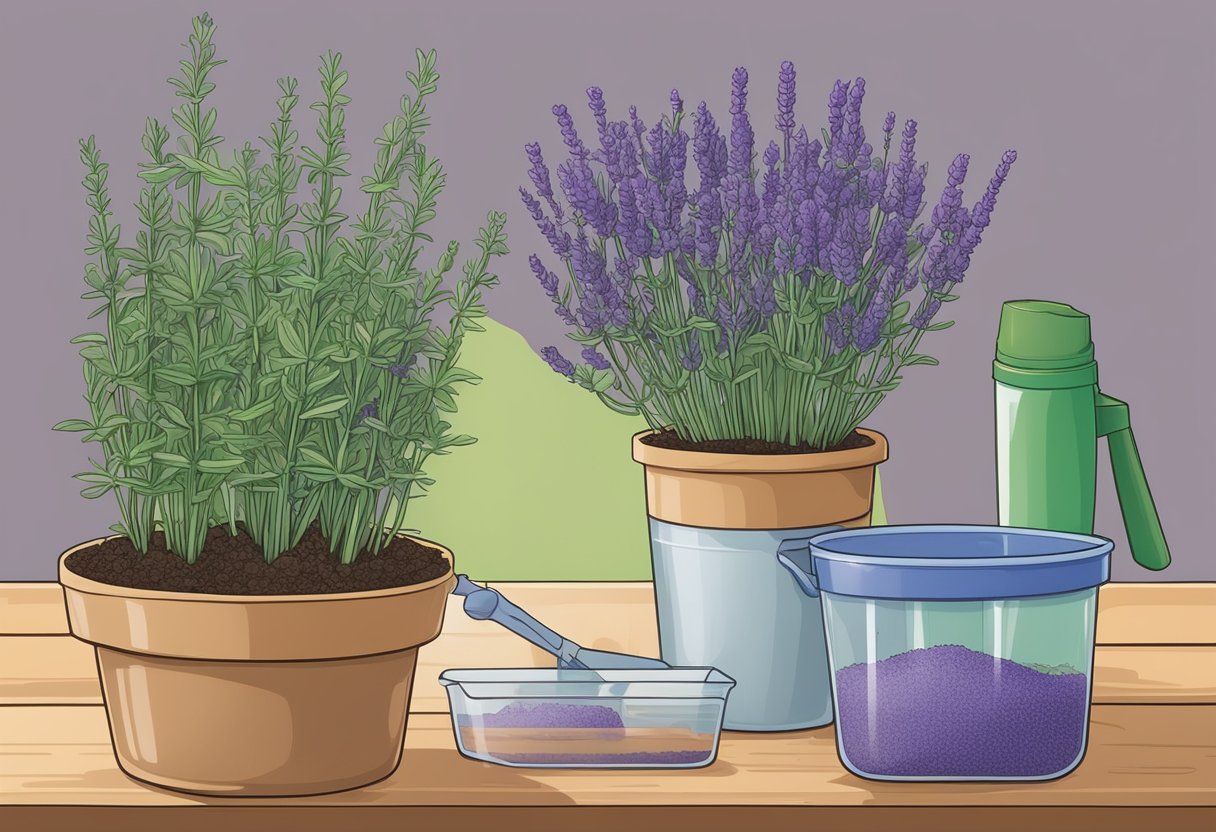
Layering Method
Layering is a technique used to propagate lavender that involves bending a low-growing branch down to the ground and burying a section of it under the soil. The buried section will eventually develop roots, and once it does, it can be cut from the parent plant and replanted as a new lavender plant.
To layer a lavender plant, select a low-growing branch that is flexible enough to bend down to the ground without breaking. Bury a section of the branch under the soil, leaving the tip exposed. Keep the soil moist and wait for roots to develop. This can take several months, so be patient. Once the roots have developed, cut the new plant from the parent plant and replant it in a new location.
Division Method
Division is a technique used to propagate lavender that involves dividing an existing plant into multiple sections and replanting each section as a new plant. This technique is best used on mature plants that have become too large or crowded.
To divide a lavender plant, carefully dig up the entire plant and gently separate the root ball into sections. Each section should have its own set of roots and several stems. Replant each section in a new location, making sure to water it thoroughly.
Division is best done in the fall or spring when the plant is dormant. It is also important to make sure that the plant is healthy and disease-free before dividing it.
Overall, both layering and division are effective techniques for propagating lavender. They are relatively easy to do and can produce new plants that are genetically identical to the parent plant. Whether you choose to use one or both of these techniques, make sure to follow the proper steps and take care of your new plants to ensure their success.
Frequently Asked Questions
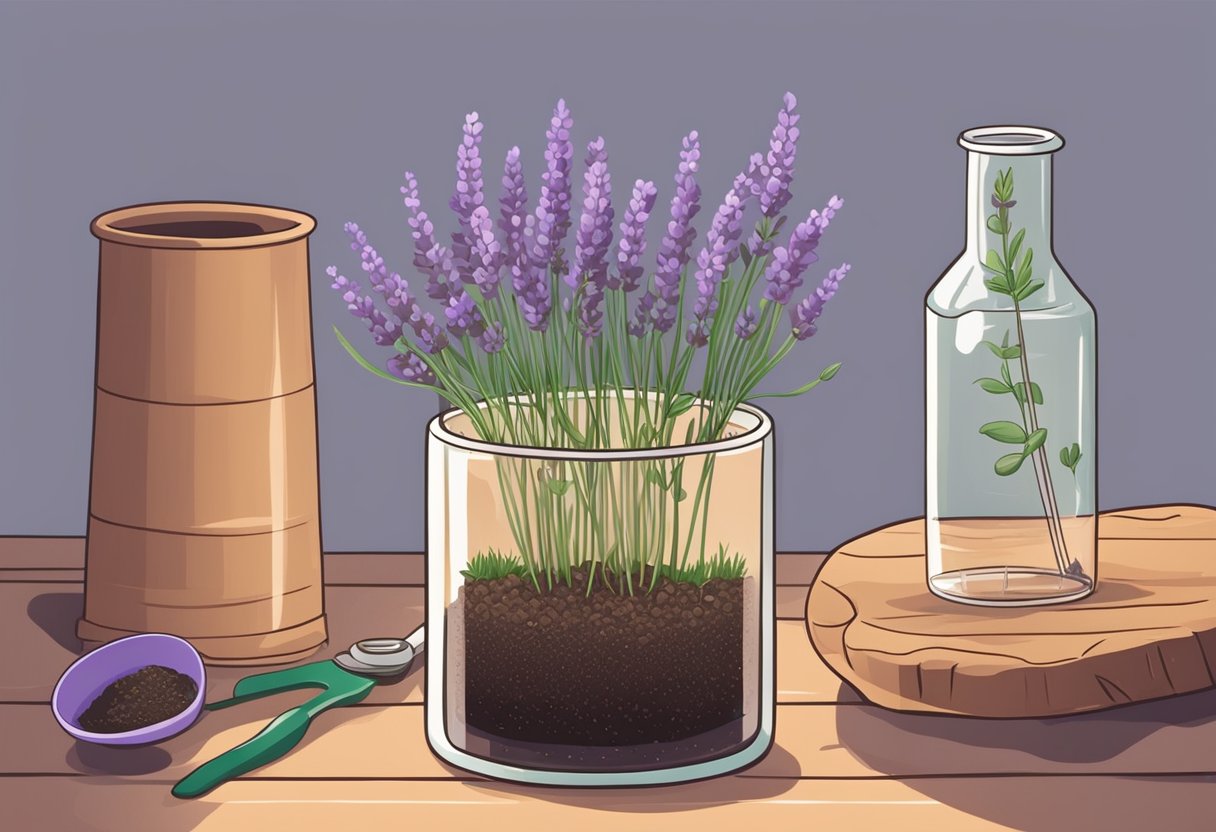
How do you propagate lavender in water?
To propagate lavender in water, first, take a cutting from the parent plant that is about 4-6 inches long and has no flowers. Remove the leaves from the bottom 2 inches of the cutting and place it in a clear glass or plastic container filled with water. Change the water every few days and place the container in a warm, bright spot. After a few weeks, roots should start to form, and once they are about an inch long, the cutting can be transplanted into soil.
What is the process for propagating lavender in soil?
To propagate lavender in soil, take a cutting from the parent plant that is about 4-6 inches long and has no flowers. Remove the leaves from the bottom 2 inches of the cutting and dip the cut end in rooting hormone. Plant the cutting in a pot filled with well-draining soil, and water it thoroughly. Place the pot in a warm, bright spot, and keep the soil moist but not waterlogged. After a few weeks, roots should start to form, and once they are about an inch long, the cutting can be transplanted into a larger pot or directly into the garden.
What is the typical timeframe for lavender cuttings to root?
Lavender cuttings typically take around 3-4 weeks to root, although it can take longer in cooler temperatures or if the plant is under stress.
Is it possible to propagate lavender without using rooting hormone?
Yes, it is possible to propagate lavender without using rooting hormone, but using it can increase the chances of success. If you choose not to use rooting hormone, make sure to take cuttings from healthy, vigorous plants and follow proper planting and care techniques.
When is the best time of year to take lavender cuttings?
The best time to take lavender cuttings is in the spring or early summer when the plant is actively growing. Avoid taking cuttings during the hottest part of the day, and make sure to keep the cuttings moist and out of direct sunlight until they are planted.
What are the uses for lavender cuttings once they’ve been propagated?
Lavender cuttings can be used to start new plants, which can be used for culinary purposes, as ornamental plants in the garden, or for making essential oils and other fragrances.

